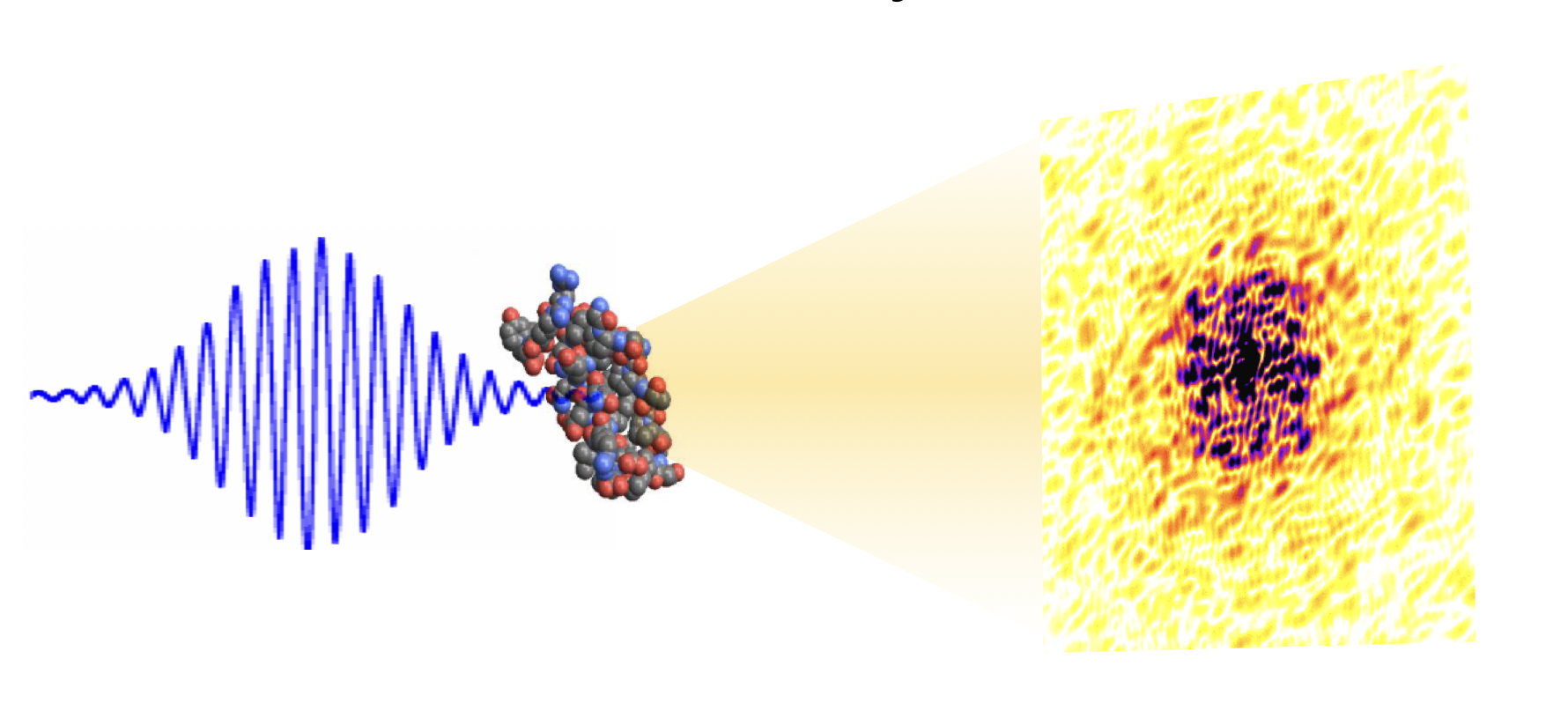Research
X-ray imaging with record high spatial and temporal resolutions
Our ability to observe processes and study function at the nanoscale is limited due to the
compromise between temporal and spatial resolutions inherent to the majority of our far-field imaging
techniques. The problem can be intuitively understood using the example of a simple pinhole camera. An
almost infinitely sharp image of an object can be obtained using a small entrance pinhole which comes with
the drawback of a long exposure time. A widening of the pinhole reduces the exposure time, but the resulting
image is less crisp.
The trade-off between temporal and spatial resolutions in far-field imaging limits our
perspective on many non-equilibrium processes at the nanoscale such as chemical and catalytic reactions,
ultrafast phase transitions, non-linear light matter interactions and biological processes.
Diffractive imaging with ultrafast X-ray pulses from Free-Electron Lasers and table-top XUV sources has the potential to visualise non-equilibrium processes such as chemical reactions in individual nanoparticles with high spatial and temporal resolutions in native environment and at room temperature. Our group uses cutting-edge technology to explore the potential of diffractive XUV and X-ray imaging for chemistry, material sciences and biology.

Author: Tais Gorkhover
Project FEL: Diffraction imaging with isolated attosecond-short X-ray pulses from Free-Electron-Lasers (FELs)
Our group recorded first single exposure high-resolution coherent X-ray image of nanoparticles using single sub-femtosecond pulses now available at the Linac Coherent Light Source (LCLS) at SLAC National Laboratory, US (https://lcls.slac.stanford.edu/) . By shortening the pulse duration to 5 femtoseconds and 500 attoseconds we have observed that the brightness of the images increase non-linearly with intensity. In the next few years we will explore this phenomenon and how it can be used to increase the spatial resolution of X-ray images.
Table-top project: Development of super-resolution imaging techniques in the X-ray and XUV regime
Improving spatial resolution limit in state-of-art XUV and X-ray imaging of non-periodic objects is still a grand challenge. We explore a novel combination between structured illumination and sparsity based reconstruction algorithms, which will help recovering structural information from noisy signal in XUV imaging. The experimental setup is currently under construction and will utilize a higher harmonics (HHG) source.
Project: Multi-photon interference at the few femtosecond to attosecond time scale
Our group works with few fs and sub-fs X-ray pulses to observe two-photon interference from X-ray fluorescence. Two-photon interference can be used to characterize the FEL focus and pulses duration. We also explore other potential applications such as structure determination for material scientific applications.